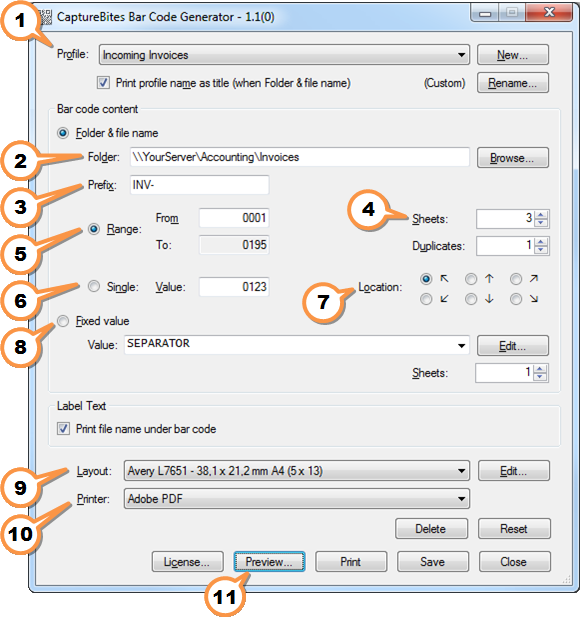Patch Code Separator Sheet

Plastic Divider Sheets A sustainable high performance returnable packaging for the canning and beverage industries. Plastic divider sheets are the most efficient technique for transport of empty cans, containers, and bottles to fillers in the food and beverage industry. Also called plastic tier sheets, plastic layer pads, or plastic separator sheets, they are far more hygienic than cardboard or fiberboard sheet offering rigidity, memory, and flexibility characteristics which allow the Plastic separator sheet to regain a smooth, clean, flat surface desired for an expanded life and multiple repack turns. Plastic divider sheets offer an economical and reusable system technique that permits for washing or disinfecting processes suited to the food and beverage industries. The sheets are very durable and are not subject to contamination from wear and tear, even after a large number of rotations. Plastic Divider Sheets Advantages.
In Windows 8, the batch code sheets are saved to the applications table. PATCH T (A4) and PATCH II (A4) sheets on A4-size paper, or PATCH T (LTR) and PATCH II (LTR) on LTR paper. Patchcode sheets must be printed in their original size. The scanner may not recognize them as patchcode sheets if they are enlarged or reduced. Specification Sheet Version 7.5. Separator sheets • Route through workflow as batches or route each document individually. Create documents automatically based on fixed pages, patch codes, and bar codes • Automatic Indexing – Based on bar codes and patch codes • Automatic Folder Creation – Based on bar codes and patch codes.
Download our most popular solution for your document processing needs. You'll get ImageRamp Batch plus three fully functioning Free tools to produce OCR'd PDF, Create Barcode Separation Sheets, and Validate barcode splits. Free Barcode Scan Separator The ImageRamp tm Scan Separator, is a free tool to create barcode separation sheets that can be used during batch processing to route, index, split and name your documents. Easily automate your common document processing tasks with this simple batch separation creator. Whether you are creating batch scans of invoices, patient records, claim records, or financial documents, Scan Separator can create cover sheets or separator pages to help accelerate documents into your workflows. It is simple to install and use in your environment with. Easily: • Utilize barcodes to index, route, rename and split files • Customize fields names • Customize drop-down lists for fast, accurate data entry • Use optional onscreen keyboard • Produce PDF files for easy printing as compatible cover sheets. Simple-to-Use Cover Sheet Creation Easy Set-up To set up the application for the first time, just label the barcode fields and create drop-down values if desired.
The Great Council of Geneva almost at once (March 5) ordered it to be burned. Candido di sciascia pdf file.
Step 1: Create the Barcode Labels Step 2: Create Drop-Down Values Produce Adobe PDF Scan Separation Files Now you can create your own separator sheets using the Barcode Value screen by typing the values or clicking on the down arrow to select from the pre-entered values. Click the Create Button and your sheet is available as a PDF file to print and/or save. Now you can Introduce Barcode-Driven Batch Scanning to your Document Capture With barcodes, you can automate the splitting, naming, workflow and destination path of your documents. D1400t asus drivers.
With today's intelligent data capture systems like and low-cost, high-quality scanners; you have the flexibility to use standard barcodes in many ways, from splitting the files to routing and indexing. Here are some of the more common practical uses of barcodes. • Split at Barcodes – Barcode enabled capture tools can search for barcodes in a scan stack and create new documents when a new or common barcode is found. New invoice numbers, patient records, repair orders or any other classification can be used allowing you to scan an entire stack of documents in a single pass. In some systems you can even ignore barcodes unless they have a specific splitting text identified, bypassing other unwanted barcode strings. • Bookmark at Barcodes - Instead of splitting at barcodes, barcodes can also be used to insert bookmarks in output PDF files.
This option lets you keep a stack of scanned documents as one file, but add bookmarks for easy navigation through the file. • Classify Documents - Barcodes help identify the type of documents being processed and can be used to select the appropriate processes for a specific document type. Some systems will look at the content of the barcodes to determine the procedures to implement next. • Routing Files - Use barcode strings to determine or set the target path (or route) for your scanned documents within your computer's file system. Automatically create folders and subfolders based on the barcode values contained in your document sets, thus providing an automated way of storing and folder classifying your documents. • Indexing Metadata – Perhaps the most common use of barcodes is to contain metadata or indexing information intended for document management systems.